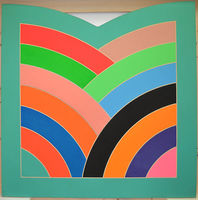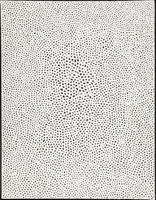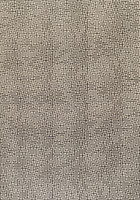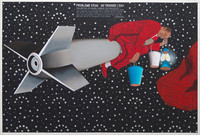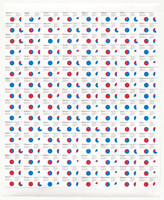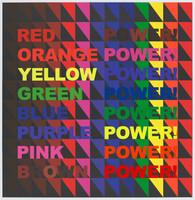About The Collection
Kusama-Vision
In 1929, Japanese artist Yayoi Kusama began being consumed by visions of polka dots, flowers, and other patterned objects in her daily life. Kusama was quoted as saying, "I call them my repetitive vision. I still see them." Though Kusama is not the only artist in this collection that incorporates visual patterns in her works, her statement asks us to sit and contemplate. While the rest of us may not see repetitive visions superimposed upon the sights we see in our daily life, our lives are filled with intriguing visual patterns created by nature and created by humans. How do the visual patterns we see in everyday life, in our time period, and our culture reflect patterns and artwork that we create?
Kusama’s works have risen exponentially in popularity since the beginning of her career following the creation of her “Infinity Rooms” which gained widespread positive public reception with the rooms dominating social media for the first few years they were introduced. However, “Infinity Rooms” were not Kusama’s only notable installation works. Her works have regularly asked visitors to immerse themselves in rooms filled with visual patterns. Most notably, rooms filled with polka dots and rooms filled with flowers.
Significance of Patterns
Patterns exist all throughout nature and their appeal to the human mind and aesthetic eye has roots in mathematics, science, and psychology. They have existed before humans and were created in artworks by the earliest humans. Kusama’s immersive installations filled with visual patterns allow viewers to be immersed in a mathematical, repetitive kind of beauty that to set foot in a Kusama room feels as though it is a connection to the universe, to nature, to beauty, and to human history.
We are much more likely to recreate patterns that utilize aesthetics, colors, and shapes that we have already seen throughout our life. For example, a certain pattern or combination of color can have cultural significance in one geographic region but not another. As such, this collection explores how the geographic region and time period of an artist affect the patterns they have created.
Analyzing the Collection
Textiles
Through review of the collection, it was noted that patterns have evolved over time as well as materials used. Early artworks in the collection that utilized patterns often did so through the use of textiles. Textiles and decorative arts were common mediums to find visual patterns particularly before the contemporary art movement. Textiles were seen as a traditional medium that has utilized visual patterning for centuries.
Abstract Expressionism (1940s-1960s)
Works in the collection that were created closer chronologically to the peak of the Abstract Expressionist movement (1940s) showed strong abstract expressionist influence. However, it is important to note that two artists in the collection around this time period, Yayoi Kusama and Kim Beom were located in Japan and Korea respectively and were much likely to be influenced by the Abstract Expressionist movement in Asia rather than the American style. Though these movements are similar as they are both under the umbrella abstract expressionism, a comparison by Sotheby’s shows that there are notable differences in the movements in the two geographic regions.
Present Day (1970s-present)
Further adding to the nuance of visual patterns, a work by Chéri Samba showcases the influence that the aesthetics of the Democratic Republic of Congo has on visual patterns. In an exhibition called “Colours of Congo: Patterns, Symbols, and Narratives in 20th Century Congolese Paintings”, the University Museum and Art Gallery in Hong Kong analyzes the common aesthetics and styles that are prevalent in modern & contemporary Congolese art. These analyses are also highly present in Samba’s work. In “Water Problem”, Samba uses patterns and visual art to enhance the telling of a narrative. Samba also utilizes many colors such as rich reds that are often seen in many of the paintings in the University Museum’s exhibit as well as including a human figure in the work.
Samba’s use of a visual medium to portray a narrative or artist statement is a style that is also seen by many other artists in the collection. In artworks in the collection approximately 1970-present day, artists were much more likely to use mediums such as print or mix-media works to convey political statements. The use of patterns in these instances is especially interesting and intentional on the part of the artists. As human beings are naturally drawn to patterns as images of beauty, disrupting patterns by placing figures, words, or shapes on top of these repetitive patterns further draws attention to the artist’s message. Particularly in the case of Andrea Fraser and Jeffrey Gibson’s works in the collection, political messages are underlying colorful and eye-catching patterning.
Conclusion
Ultimately, visual patterns have served as a way for humans to connect with nature, to draw attention to important messages, and to create beauty. The function and importance of patterns truly only expands as humans further find new and interesting ways to utilize them.
